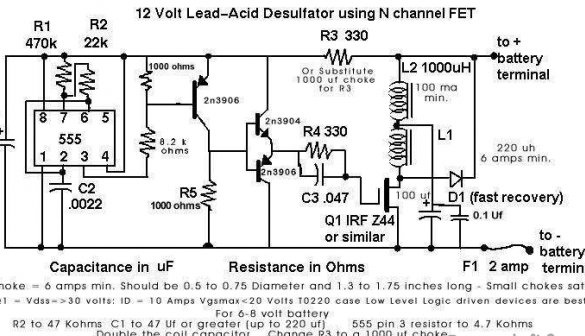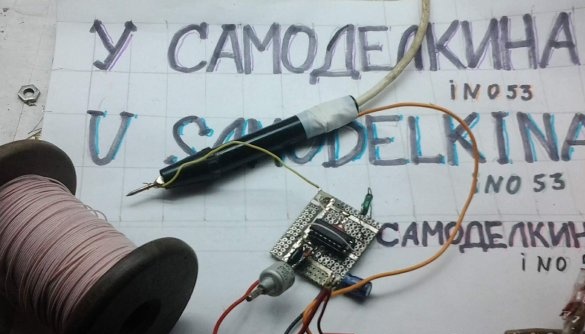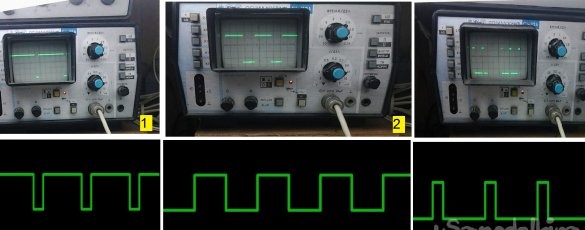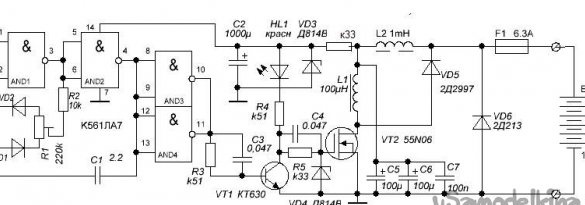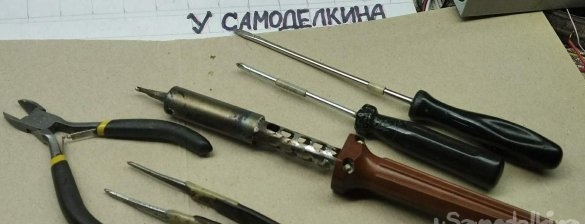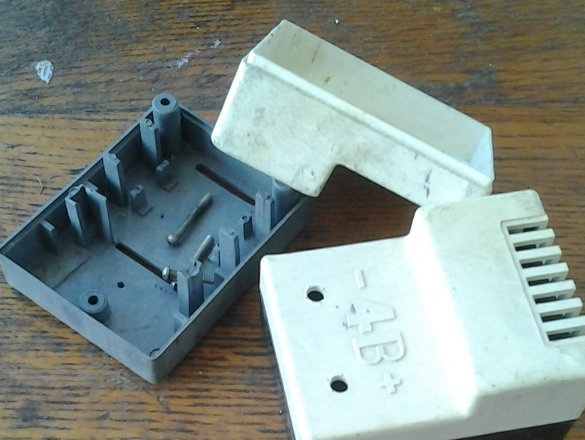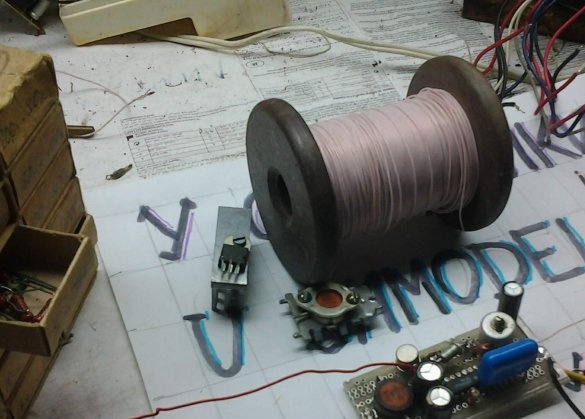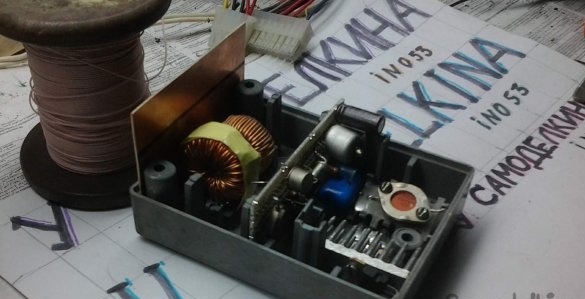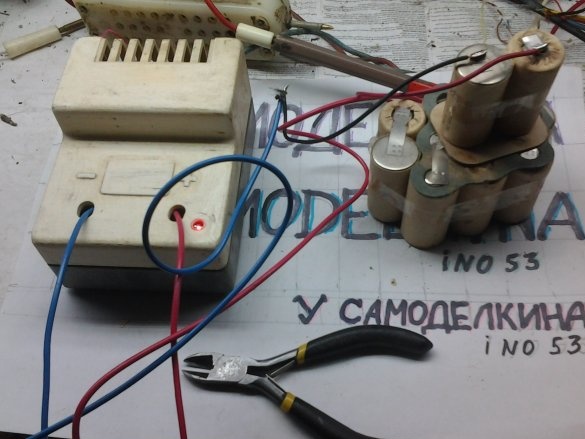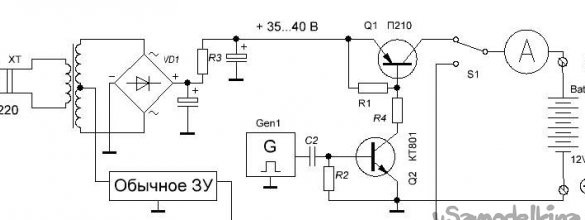Inspired by the theme "Desulfator - a device for the" treatment "of batteries" and recent events in my life. I'll start from afar.
... Once, a long time ago, an old friend came up to me, a slender and curly-haired owner and at the same time a small worker, for two workers, a service station, and asked me to mold a desulfator (hereinafter DS) according to the scheme he brought. I looked at the little shepherd, grimaced and refused. He did not persuade, but kicked the bag he had brought with him, it clinked there and I took up the soldering iron.
... The other day, the same friend, a fat and bald owner of a service station, a gas station and a hotel for long-distance fighting, was driving up and asked to blind another DC, the wagon drove through the old one. I began to fight back, he did not persuade, only rustled with green papers, and I took up the soldering iron.
Morality - professional motorist with great experience and experience, this thing is needed, it means it works, and, most likely, not bad.
So how does it work (quotation assembly).
About the device diagram.
The original schematic from the Radiokot site, cited and further developed by borodach and a little by me.
There the generator was assembled on a 555 timer, it wasn’t at hand, therefore, like Pugacheva’s: “I blinded it from what it was ...”, on 561LA7 according to the scheme with the possibility of PWM regulation.
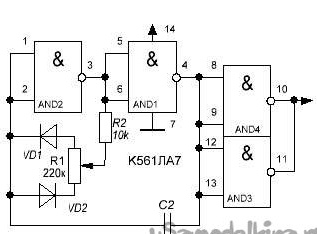
The process of working out the scheme on the layout.
Result.
PWM works. Why such a garden? The scheme that we will consider later works as follows. way - during the opening of the key on the field effect transistor (hereinafter referred to as PT), current flows through the inductors and energy is accumulated in them, which at the moment of closing the PT (sharp!) is released in the form of a high-voltage (relatively) surge applied to the battery. Adjusting the duty cycle allows you to optimize these things. I don’t know how. The battery man who does this is muttering about a pulsed voltmeter and current clamp, but, in my opinion, he is doing this with the help of the great master TYK.
And here is the whole scheme
The generator on K561LA7 with PWM regulation, the driver on KT630, the key on the field, everything is clear.
Tools and materials.
Conventional bench and mounting tool.
Everything is clear about the details according to the scheme, windings are roughly matched from the wreckage of switching power supplies using an inductance meter.
Design begins with the choice of housing.
For a single product, it makes no sense to develop and manufacture a printed circuit board (PCB), this is a workhorse, not an exhibition copy, we assemble on a breadboard.
PP at the assembly stage.Further photos were partially skipped due to low information content.
We try to put in the case.
The blank of the back plate is not yet trimmed.
And finally - assembled, check.
We tested the device on the battery from my (!) Screwdriver, which is why it died irreversibly by morning. Es-but, my antipathy to this device only intensified.
The fate of the product. The owner shook the case with scotch tape, lamented that the output wires were thin, it was necessary to be a little finger thick, hooked on heavy brass terminals. A couple of days after he took the DS, I call to find out the details. The answer is that everything is fine, everything works, do not bother.
And a little addition.
Once, when the chargers were made on biscuits and transistors, there was an undeservedly forgotten circuit with the functions of charging and desulfation.
Here, the rectifier is assembled according to the bipolar scheme, but the negative cable is taken as the common one. It turned out a two-level rectifier, from a lower voltage (it is possible without smoothing), an ordinary charger is powered, including possibly thyristor, from the larger - DS. The power of the DS pulses is determined by the second capacitor (and, of course, by the voltage on it). Generator - a conventional multivibrator with amplified output, differential. the chain C2, R2 generates short pulses that are fed to the battery through the P210Sh key.
Well that's all, comment.



